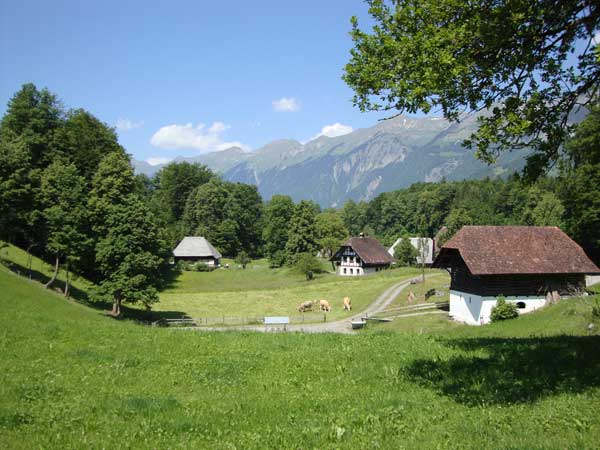
If you have the chance to travel to Europe, visiting museums is a pretty traditional thing to do. This summer, I had the chance to travel to Switzerland – and to visit a couple of museums with close ties to woodworking.
In and near the town of Brienz, you’ll find both the Swiss Woodcarving Museum and the Ballenberg Swiss Open-Air Museum. The Swiss Woodcarving Museum is a fairly new entry to the country’s cultural options, opened five years ago and run as a public/private partnership involving the local government, woodcarving associations and the private, century-old Jobin family woodcarving business.
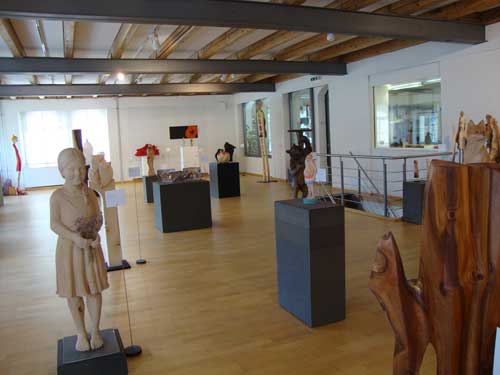
On display this summer was an exhibit showcasing the work of members of the Swiss and local woodcarving associations, which merged last year. Most of the pieces were made in the last two or three years. “It’s good to have a platform to show this living tradition,” said Flavius Jobin, a fifth-generation member of the family carving business.
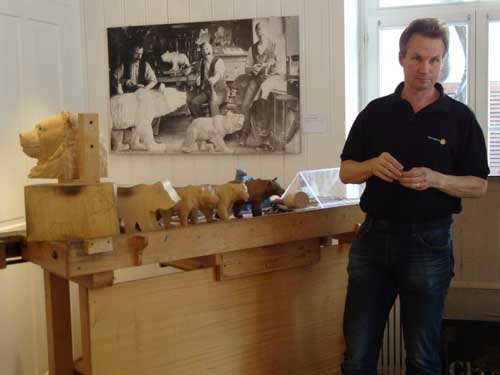
Although Flavius himself is trained not in woodcarving but in cabinetmaking, and his own work focuses more on the music box side of things, he is familiar with the carving processes. “The cows that you see in the [gift] shop were done by my father-in-law, age 90,” he said, while the guy who cut out rough shapes with band saws “he’s 92. He said about four years ago that he was tired and didn’t want to do it anymore. Now we do it with laser cutting.”
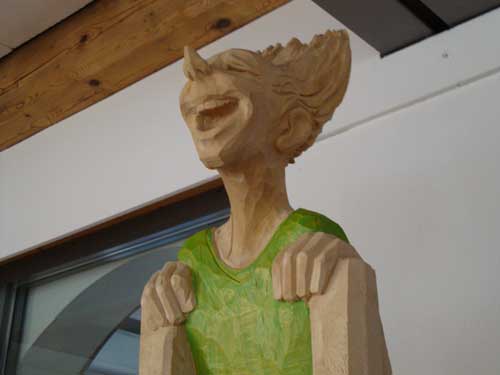
The carving business involves preparing a model, preparing wood, carving, and shaping, often using plasticine for the models, Flavius said. Large sculptural carvings are premilled on a CNC router. CNC machines, however, are not efficient enough to complete the carvings. “The last one and a half centimeters has to be done by hand. If not, it has no life inside,” Flavius said.
Much of the business today involves carving models that people use to pitch product ideas, or items that will be filmed for digital media. “If you want to make a digital model of a bear it takes a lot of 3D pixel scans,” Flavius said.
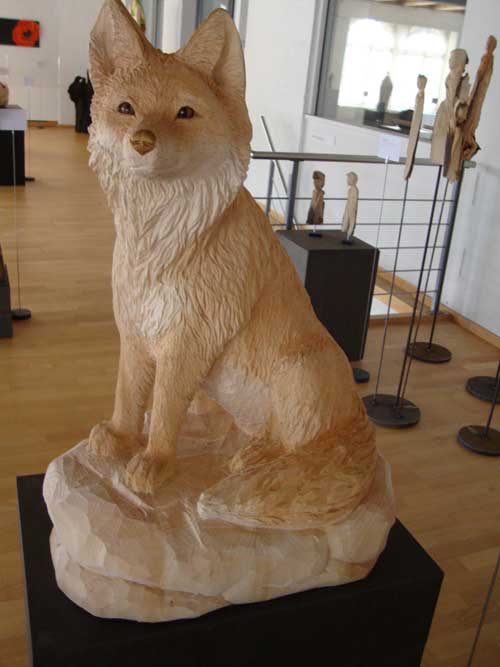
That is not to say that history is forgotten at the museum. Among its objects on display is a cabinet that likely dates to a 19th century Paris exhibition. In that era, the Swiss government was sending woodcarvers from the Brienz region to shows elsewhere in Europe and Switzerland, at the time a low-cost country, “profited tremendously,” Flavius said. “The carvers came back with contracts for a lot of work: bears in Russia, a whole chalet for a world exhibition in Chicago – they took it apart to ship it and put it back together.”
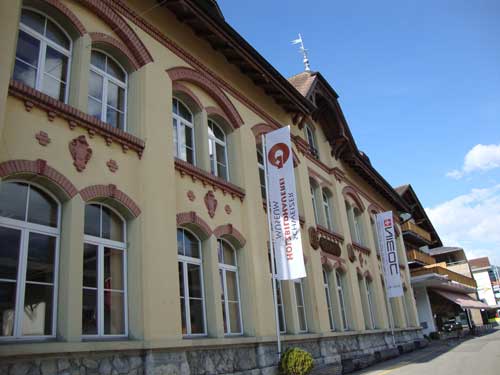
The cabinet at the museum includes a dragon and a phoenix among its decorative carvings, “most likely telling clients ‘we could do designs in your furniture,’” Flavius said. It was created by a woodcarver who was living in Brienz and teaching at the local woodcarving school at the time.
Also found in the museum is a music box that used to provide entertainment for those waiting at a railway station near the turn of the twentieth century. Background figures are clothed in Chinese or Latin American attire, and, Flavius said, pointing to the figures of female dancers, “It’s ‘sexy.’ You see the ankles. In 1900, that was quite risqué.”
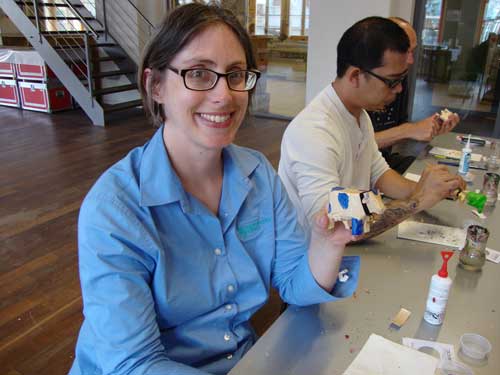
Today, visitors to the museum – with advance notice, of at least five days, in groups of 10 or more – can actively participate in the Brienz region tradition of woodcarving. The museum offers the chance to carve a traditional Swiss wooden cow. (Cow coloring sheets are provided for children.)
The group I was touring with, consisting of media representatives from Germany, China, Poland, Ukraine, Indonesia and the Czech Republic, did participate in the cow carving. We did not need to use any of the Band-Aids® provided as supplies.
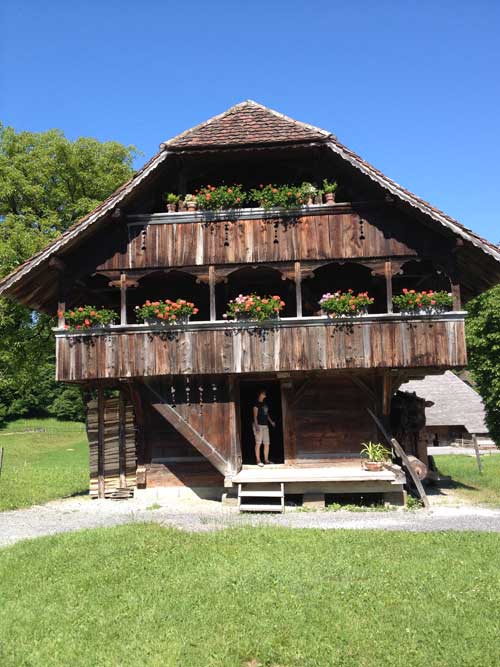
The other museum on our tour, the Ballenberg Swiss Open-Air Museum, highlights actual architectural examples of historic dwellings from all regions of Switzerland.The wooden houses showcase various styles of Swiss architecture, as well as wooden furniture and artifacts.
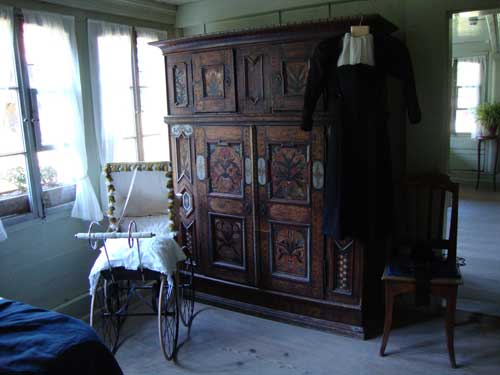
The Ballenberg also offers demonstrations and classes on historic handicrafts. Our tour guide knew of a German couple who had been restoring their house via the knowledge learned from Ballenberg classes. And someday, I will have to make it back there to get to the parts of the museum with the cheese and chocolate making demonstrations.
The media trip was sponsored by Swiss Tourism, to highlight their new Swiss Travel Pass, which works for trains, buses and boats and is available through RailEurope.com. Read more about it in the October 2015 issue of Woodworker’s Journal.





